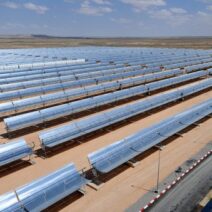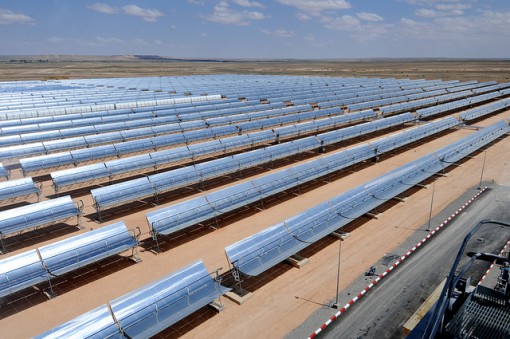In an age defined by rapid technological advancement and increasing urbanization, the way we move through our daily lives has profound implications not just for our health, but for our planet. The pursuit of efficiency invariably leads us to consider how we can conserve our own physical energy while also promoting a lifestyle that is less burdensome on the environment. The idea of moving smarter to feel better resonates deeply as we strive to adapt to modern life’s exigencies. This discussion encapsulates various actionable strategies to achieve that goal, enhancing both personal well-being and environmental stewardship.
It is a prevailing observation that many individuals exhibit a sedentary lifestyle, often moving from one confined space to another, whether in cars or office chairs. The implications of this lifestyle are both immediate and far-reaching. Not only does it contribute to physical ailments such as obesity and musculoskeletal disorders, but it also predicates an unsustainable relationship with energy consumption. Our modern conveniences, although designed to maximize ease and efficiency, often lead to an increase in energy expenditure, particularly fossil fuel energy, resulting in a significant carbon footprint.
To address this pressing dilemma, individuals must adopt a multifaceted approach to energy conservation that encompasses both physical and mental strategies. At its core, fostering an awareness of our movement habits is essential. Simple changes in our daily routines can lead to more sustainable energy use, effectively marrying physical health with environmental consciousness.
One effective strategy is to evaluate and modify one’s transportation habits. For short-distance commutes, consider walking or cycling instead of relying on motor vehicles. This not only saves energy but also engenders a heightened sense of physical vitality. Engaging in these physical activities contributes to cardiovascular health, enhances mental clarity, and boosts overall morale. The exhilaration of fresh air and varied scenery can greatly contrast the monotonous confines of public transportation or personal vehicles.
In tandem with optimizing transportation, the integration of smart technology into our movement can yield substantial benefits. Smart wearables can monitor personal activity levels, thereby offering insights into energy expenditure. By providing real-time feedback, these devices can motivate individuals to incorporate short bursts of activity throughout the day, such as standing while on a call or taking brisk walks during breaks. This not only invigorates the body but also sharpens cognitive function—a dual benefit that reflects the adage, “A healthy mind resides in a healthy body.”
Moreover, one cannot overlook the importance of ergonomics, particularly in work environments. An office setup that prioritizes proper posture and movement can significantly reduce physical strain. Utilizing adjustable desks that promote standing or sitting as desired encourages constant variation in posture, which has been shown to mitigate fatigue and enhance productivity. Such investments pay dividends, reducing the likelihood of chronic pain while simultaneously curtailing energy drainage.
Incorporating mindful practices into daily routines further enhances energy conservation. Techniques like yoga, tai chi, or even simple stretching can improve flexibility and reduce muscle tension. These practices cultivate an awareness of one’s body, reinforcing a significant principle: mindful movement conserves energy. This not only applies to physical exertion but extends to the allocation of mental energy as well. The modern individual often grapples with cognitive overload, which can lead to decision fatigue and diminished efficiency. Learning to prioritize tasks through time management techniques can result in more judicious use of mental faculties, translating to a more energy-efficient lifestyle.
The role of community in promoting energy conservation cannot be overstated. Engaging with local groups or initiatives that prioritize sustainable practices can enhance motivation. Whether through environmental clean-ups, parkour classes, or community gardening, becoming part of a collective effort encourages individuals to take action, leading to both personal and communal benefits. This approach not only fosters a sense of belonging but also amplifies the impact of sustainable practices on a larger scale, creating a ripple effect throughout the community.
The interrelation between physical activity and mental well-being is a focal point worth exploring in depth. Regular movement not only fortifies the body but also releases endorphins and serotonin, neurotransmitters that play significant roles in mood regulation. As individuals move smarter, they inherently cultivate a more positive state of mind, establishing a cycle of well-being that reinforces the desire to engage in further energy-conserving behavior. When individuals feel better, they are more likely to make conscious decisions that favor both personal health and planetary wellness.
Lastly, education plays a pivotal role in advocating for smarter movement patterns. Schools and workplaces should prioritize programs that instruct on the physical and environmental benefits of active lifestyles. By fostering an understanding of how our choices impact not only ourselves but the greater ecosystem, we promote a culture of mindful energy conservation. Workshops and seminars focused on this ethos can inspire a new generation to take responsibility for their own physical energy use while becoming stewards of the Earth.
In summation, the call to conserve physical energy is not merely an individualistic endeavor but a collective movement towards a more sustainable future. By consciously redefining how we engage with our environments and transport ourselves, we not only enhance our own well-being but we also mitigate our ecological footprint. The journey towards moving smarter and feeling better encompasses myriad strategies, from changing transportation methods to re-evaluating workplace setups. Ultimately, these efforts coalesce into a profound realization: to foster change, both within ourselves and across the globe, we must commit to living mindfully and energetically.




